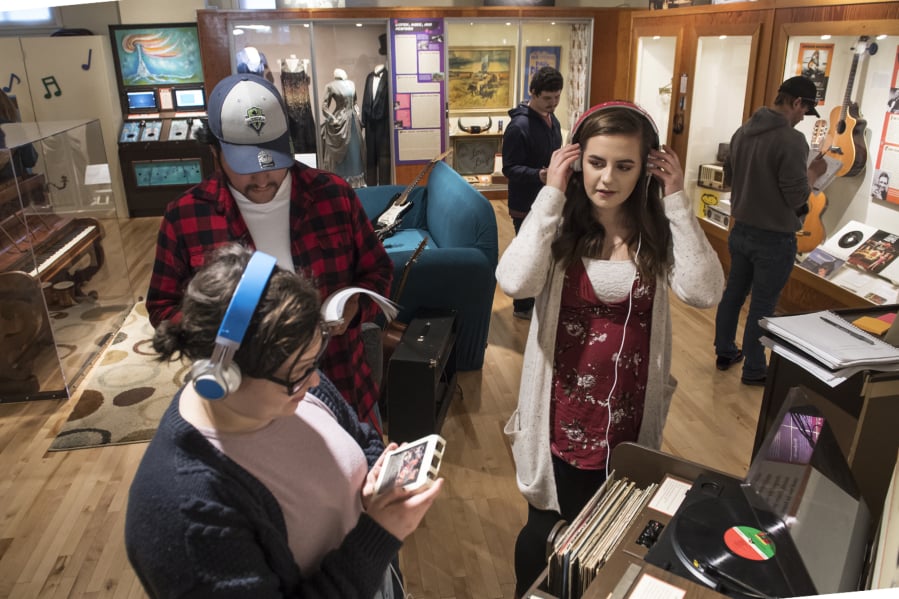Youth phenomenon
Next comes music as youth phenomenon: rock ‘n’ roll and radio stations. Stopping by Vancouver to DJ on station KVAN in the late 1950s, and recording his first single here on his way to singer-songwriter stardom, was Willie Nelson — who called himself “yer cotton-pickin’, snuff-dippin’, tobacco-chewin’, stump-jumpin’, gravy-soppin’, coffee-pot-dodgin’, dumplin’ eatin’, frog-giggin’ hillbilly from Hill Country, Texas.”
The exhibit’s welcome beacon is a shiny colonial-style jacket, complete with frills and tricorn hat, that once belonged to Portland band Paul Revere and the Raiders. The jacket was loaned by longtime Vancouver resident Roger Hart, who played a key background role in the development of rock ‘n’ roll. Hart was a Vancouver disc jockey who randomly connected with a young rocker named Paul Revere Dick in 1963, and hired his band to play downtown Vancouver’s teen Trapadero Club. Hart became the Raiders’ manager for a while, and he had them record the garage-rock classic “Louie, Louie” — though their tight, professional performance was outshined by the sloppier, noisier, weirder version by fellow Portland band the Kingsmen.
More exhibit panels explore Clark County’s dance halls and schools; the founding by Walter Cleland of a small classical ensemble that grew into the Vancouver Symphony Orchestra; and, ultimately, the working musicians who call Clark County home today — from Maestro Don Appert of the Clark College Orchestra to diverse performers like bluegrass harmonizers The Misty Mamas, Americana rockers The Pearls and jazz drummer Garry Hobbes.
Anchor
Now that you’ve walked clockwise around the room, turn to the center to discover the exhibit’s real anchor: the first piano ever to reach the Pacific Northwest, in 1846. It was brought from England to Fort Vancouver by those Covingtons, Richard and Anne, and then to their homestead in Orchards. The Covington piano has been the property of the Clark County Historical Museum for years, Richardson said, but this is the first time it’s been put on display.




